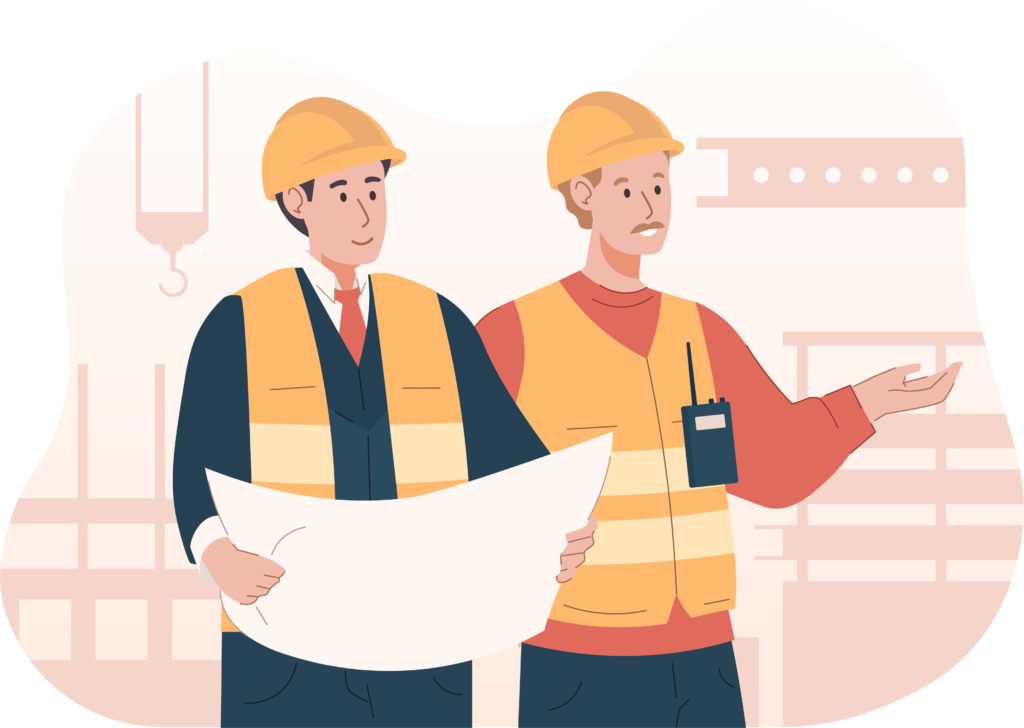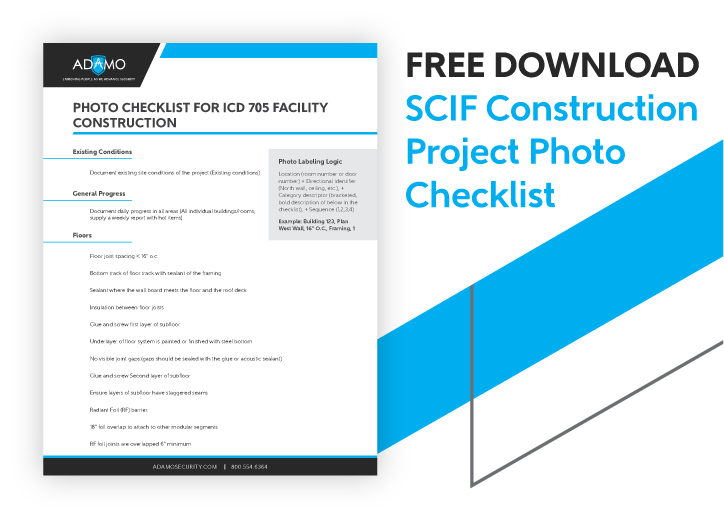Build a positive relationship with your Accrediting Official (AO) for a smoother SCIF/SAPF project
When constructing a SCIF/SAPF, the Accrediting Official (AO) is the most important person you’ll be working with. They decide whether or not your facility receives accreditation, allowing the facility to then house classified information or programs. You don’t want to be someone the AO doesn’t want to work with, so be sure you are working to build a positive relationship from the beginning. Let’s walk through some of the best ways to make sure your AO relationship starts off on the right foot.
Starting the Relationship

When you first approach your AO, you want them to see you as knowledgeable. Make sure you familiarize yourself with the requirements laid out in the ICD 705 Tech Spec. Keep these standards on hand throughout the construction process with one of our Pocket Tech Specs. It’s important to build trust with your AO, and knowing what you’re talking about is a great place to start.
When meeting your AO, try to gauge what kind of AO they are: Are they experienced or inexperienced? How risk averse are they? Do they see most things in absolutes? The answers to these questions will inform how often you check in with them and how strictly you’ll need to adhere to the letter of the Tech Spec.
For example, a more inexperienced AO may need more check-ins to feel comfortable in the job you’re doing. You should give concrete and detailed reasons behind any decisions you make for your facility. For a more experienced AO, you might be able to give a simpler outline of your choices more infrequently.
A more risk-averse or cautious AO may only want to follow the Tech Spec exactly as it’s written. Maybe you have an alternative wall type you want to use that still meets Tech Spec standards; however, your AO may not be comfortable with the alternative, wanting to instead stick to the three listed wall types.
This is a relationship in which using your emotional intelligence comes in handy. If you can understand and empathize with your AO, you can figure out how to better approach the relationship as a whole.
From the start, make sure you’re following the process to the best of your ability. While some projects may require more creative solutions outside what’s explicitly written in the Tech Spec, you do want to minimize how often you stray from the letter of the Tech Spec. If something is different than what the AO is used to, it can cause conflict and delay. The smoother things run, the less chance something happens that causes tension with your AO.
Dealing with Disagreement
Sometimes the AO may not agree with a decision you want to make, or they are asking for something you don’t see as necessary. Navigating this can be a difficult process. Ultimately, your AO has the final say in what they will approve, but there are optimal ways to approach a discussion.
First, you want to evaluate the situation. If you just go along with what the AO is recommending, what will the outcome be? When it comes to minor things like the paint color above the false ceiling, there will be minimal cost to you to make the changes the AO is asking for. A “battle” over paint color might not be worth it.
However, there may be situations where the AO’s request could cause a major construction delay or cost a lot of money. In these situations, it may be worth it to engage in a discussion. Maintaining a positive relationship with your AO means choosing your battles carefully.
This is another situation in which understanding the type of person you’re working with is important. A more risk-averse or inexperienced AO may struggle with anything that isn’t explicitly in the Tech Spec. Others may speak in absolutes about a requirement where the Tech Spec actually leaves room for interpretation.
If they’re not wanting to move forward with a certain idea, make the effort to understand their perspective. Is there a specific concern they have? What problem are they trying to solve? Once you figure that out, communicate to them that you understand where they’re coming from.
From there, offer an alternative solution if you have one. Come at this conversation humbly and respectfully. Your AO is not someone you want to make an adversary out of, so even in disagreement, be sure to approach things carefully.
If your AO is still adamant in their position, at this point, it’s best to go with what they’ve asked. At the end of the day, what they say goes, and you don’t want to do anything that will risk your accreditation.
Wrapping Things Up
As your project comes to a close, make sure you’re wrapping up things as neatly as possible. Throughout the project, you should be thorough in your documentation, especially in photo documentation. The more information you can give, the more potential questions you can answer for your AO, and the more trust you can build with them.
Related: SCIF Accreditation Hurdles and How to Overcome Them
Here, the goal is to move the final accreditation checks along as smoothly as possible, so this is where sticking to the process and knowing your stuff will really pay off. If you’ve built a relationship of trust with your AO, it can even expedite your accreditation and get your program operating sooner.
If managing your AO relationship or other aspects of the construction process feels daunting, Adamo can help. Our consultants can partner with your team and offer their expertise to guide you through any part of your project.




